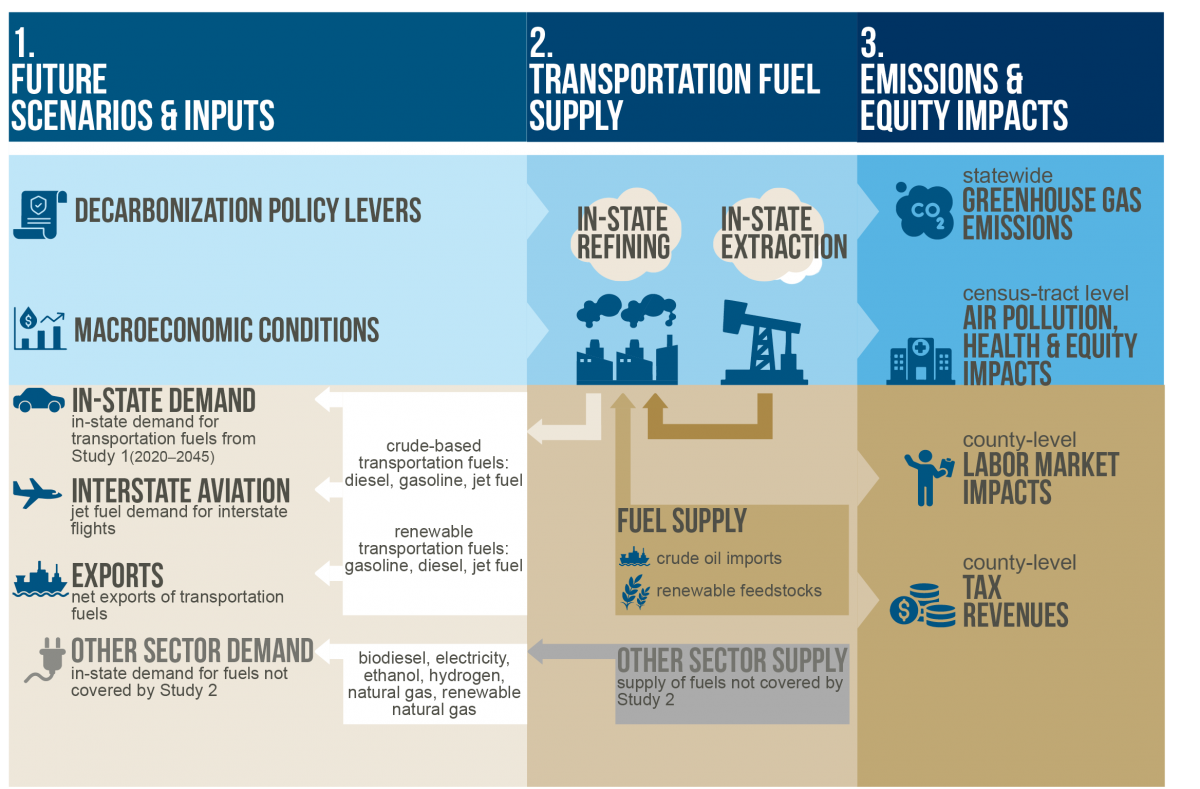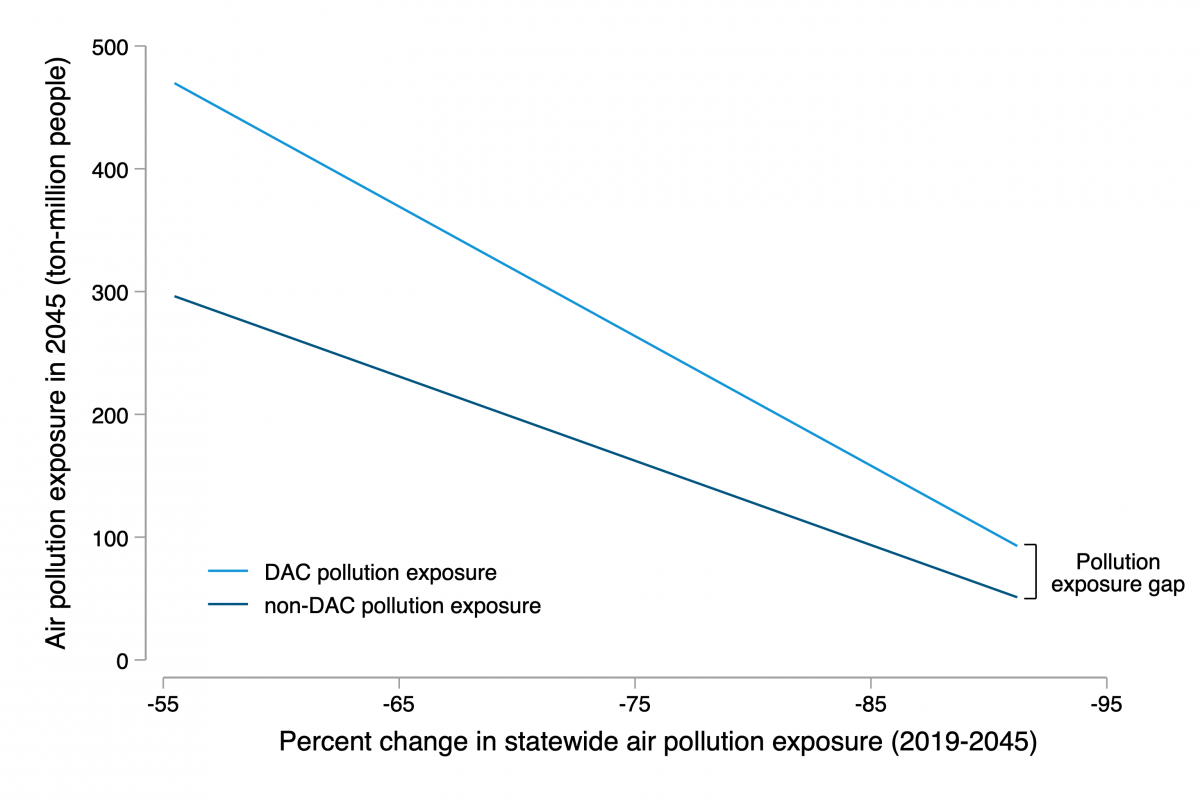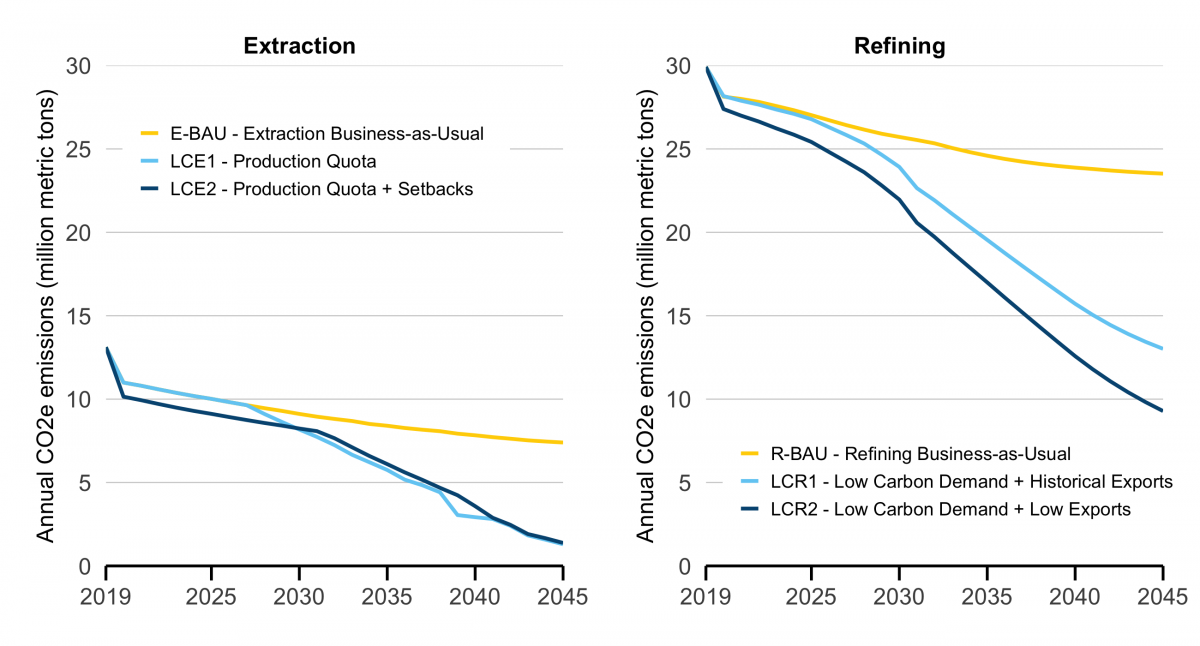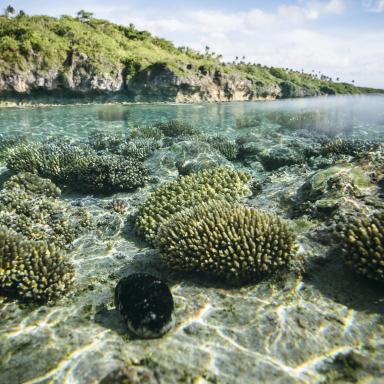
Climate change and economic inequality are two of the defining issues of our times. These problems are also intricately linked. The imperative to address climate change is overlaid on a world that is deeply unequal, which is likely to worsen under climate change. Yet, at the same time, there may be opportunities for well-designed climate policies that may also reduce existing inequities.
This is the challenge before California, and indeed the rest of the country. California has a goal of reaching carbon neutrality by 2045. While the state’s carbon emissions have been generally falling since 2004, recent declines are well off the pace needed to reach carbon neutrality by 2045. One particularly important and stubborn sector is transportation. The production and use of fossil transportation fuels in California contributes roughly half of California’s carbon emissions today, with an essentially flat trend in recent years.
Recognizing this, California’s 2019 Budget Act funded two University of California teams to examine various pathways for parallel reductions in fossil fuel demand and supply in California’s transportation sector, and with a particular lens towards public health, environmental, and economic equity consequences. One team, based at the UC Institute for Transportation Studies, studied the demand side of transportation fuel. Our UCSB team, led by Olivier Deschenes, Ranjit Deshmukh, David Lea, Paige Weber, and myself, together with an incredible group of over a dozen graduate students, researchers, and staff at emLab, tackled the supply side, consisting of oil extraction and refining. This analysis was published on April 23 in a report to CalEPA titled, “Enhancing equity while eliminating emissions in California’s supply of transportation fuels”.
There is no go-to model for understanding how the public health, environmental and economic impacts of a managed decline in transportation fuel supply in California is distributed across the State. Instead, our team of experts in energy systems, climate science, and health and labor economics had to build an empirically-grounded, spatially-explicit model of in-state oil extraction and refining from the ground up (and in nine months, all while working remotely).

Figure 1. Schematic showing modeling and analytical approach used in this study
Our model enabled us to explore nearly 2,000 different future decarbonization scenarios that reflect different statewide policies and macroeconomic conditions (Figure 1). Extraction policy possibilities include a statewide quota on extraction with auctioned permits (or equivalently, a severance tax on extraction) and setback distances between oil wells and where people reside, work and play (e.g., homes, hospitals, daycares, schools). For refineries, we consider limits on refined fuel exports. We then examined how these policies and conditions affect the distribution of air pollution, mortality risk, employment, and tax revenue across the State.

Figure 2. The air pollution exposure gap between disadvantaged and other communities narrows as statewide air pollution exposure from oil extraction falls following a production quota with auctioned permits.
Declining oil extraction and refining activity reduces local criteria pollutants and toxic air contaminants. But how that cleaner air is distributed across the state depends crucially on which oil wells and refineries are affected. For example, if policies primarily phase out oil wells near disadvantaged communities, then more of the clean air benefits will go to disadvantaged communities, helping to narrow the current gap in pollution exposures between disadvantaged and other communities across the State. Likewise, if policies tend to affect less labor-intensive oil fields, the employment consequences may be smaller.
We find that a quota with auctioned permits has a built-in “equity benefit”: as air pollution falls, a greater share of that reduced air pollution exposure flows to disadvantaged communities (Figure 2).
At the same time, setback distances may shut down wells in less labor-intensive oil fields, allowing for smaller employment effects for the same total reduction in oil extraction.
Statewide, we quantify decarbonization scenarios that reduce extraction carbon emissions by 90% between 2019-2045 (Figure 3). These scenarios are associated with reductions in total premature mortality and other adverse health outcomes of 17% to 37%, and in total employment between 18 % to 24%.

Figure 3. Annual GHG emissions (MtCO2e) from California’s extraction (left) and refining (right) segments, as modeled for different scenarios between 2019 and 2045.
For refining, we find more large scale decarbonization harder to achieve. The most aggressive scenarios we modeled project that refining emissions to decline by 56% to 69% between 2019 and 2045 (Figure 3), with premature mortality and other adverse health outcomes declining by 18% to 28% and employment falling by 18% to 30%. Emissions from refining remain because refineries will likely continue producing products, such as liquid renewable fuels and jet fuel. Large decarbonizing by 2045 for refineries will likely require use of carbon capture and storage and land-use solutions.
There is a lot to unpack in both demand and supply-side studies. Our main report, synthesis report, and technical appendices alone total 345 pages! And we think this is just the start of deeper analyses to come. Our hope is that this current study provides the State with possible decarbonization pathways to consider. Of these many carbon-neutral futures, some may even feature a less unequal world.



